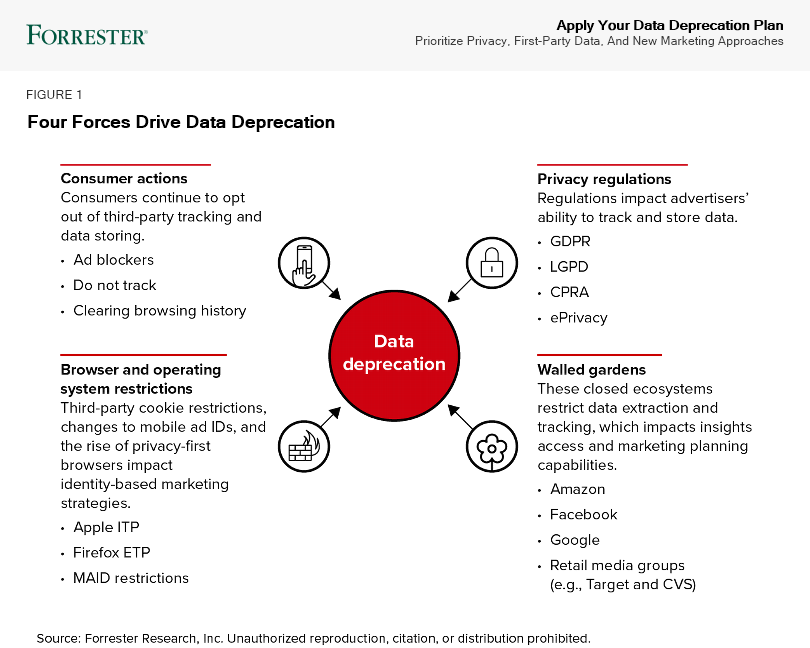Three Personalization Mantras To Help You Survive A Data Deprecation World
In this corner … consumers and privacy concerns. And in the other corner … companies prioritizing personalization in their business objectives. Who will win this fight of opposing forces?
For too long, companies (and particularly marketers) have tried to drive efficient customer acquisition with “personalized” experiences and by hyper-targeting individuals. But there is a disconnect between what consumers want out of personalized experiences vs. what companies are offering them. Our research shows that customers are more receptive to personalized moments post-purchase over pre-purchase — yet companies heavily invest in pre-purchase personalization. This disconnect will only worsen with the biggest existential crisis facing marketers today: data deprecation. Forrester defines data deprecation as the combination of four forces:

Consumers have increasing power and control over their own data. Companies are feeling it. EU regulators fined Meta $414,000,000 for forcing customers to accept personalized ads, in violation of the GDPR. Apple continues its “privacy matters” brand by launching Mail Privacy Protection to mask email activity, Private Relay to mask IP addresses, and new iCloud data backup security features, among other capabilities. It’s no surprise that preference centers are in vogue, allowing customers to control their communication preferences and volunteer zero-party data.
Here are three mantras on personalization to keep you sane in a data deprecation world:
- “I can let go of the customer 360 pipe dream.” You don’t need to, nor are you going to, know every data point about your customers. This was a tall task to begin with and will only get harder. Data deprecation hampers access to identifiers such as third-party cookies and mobile ad IDs and reduces the nodes available to link devices, locations, households, and people. Companies use these nodes to create consumer identity graphs. Fewer linkages yield fragmented, duplicated, and shallow consumer identities, which means the concept of achieving a full customer 360 view is unrealistic — nor is it necessary.
- “Understanding a customer is different from knowing a customer.” “Knowing” might be identifying a customer’s demographics — e.g., name, email, age, location, etc. “Understanding” a customer is another tier above knowing, such as understanding a person’s context regardless of who that person is. For example, understanding that an entire airplane of passengers is frustrated because their flight is canceled is critical context before knowing each individual passenger on the plane. Or understanding that someone in the store needs the best possible service from a salesperson supersedes knowing whether that person is a new or loyal customer.
- “I don’t need to deliver a 1:1 personalized moment every time.” You won’t know the precise context, consumer, content, channel, and trigger every time, and thus you won’t be able to deliver a “perfect 10” moment every time. The personalization experience that you ultimately deliver will vary significantly based on how much is known vs. unknown about a customer and how accurate that data is. Personalization doesn’t always mean knowing that “Jessie is in this place at this exact time doing this exact thing.” Instead, it could mean Person X is simply looking for NFL box scores and wants to see more football-related content. And don’t forget that sometimes the best personalization is no personalization at all.
For more on consumer personalization, check out our latest research stream here or check out the related links below. More questions? Schedule an inquiry or guidance session to chat live with us.
